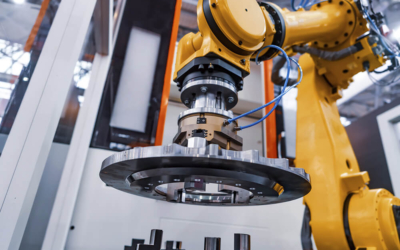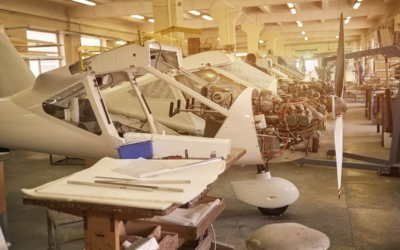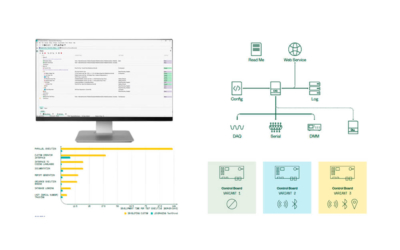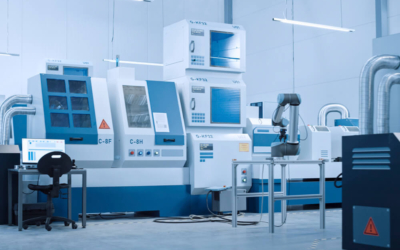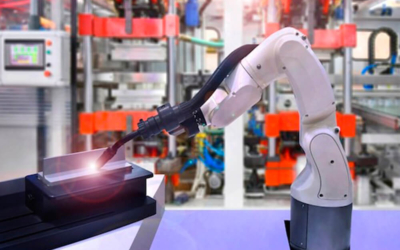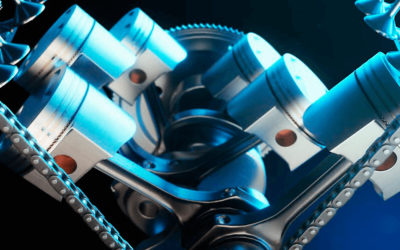Energy transmission infrastructure is the lifeblood of an economy. When energy infrastructure fails, so does everything else. To secure more contracts and position your business as the first choice in energy infrastructure deployment and maintenance, you need to reduce downtime to the absolute lowest figure possible. One of the most effective ways is to shift from a routine maintenance schedule to a preventative maintenance approach. In addition, timing your upgrades and adding capacity will make your grid more resilient.
Blog
All Content
Disruptive Future Industrial Equipment Technologies
All Content, Artificial Intelligence, Automotive, Digital Manufacturing
The industrial equipment sector has been an important aspect of the world economy for a long time. It encompasses a wide range of products and services, including heavy machinery, tools, and automated systems, which are widely used in various industries such as manufacturing or construction.
Safe Flight: The Importance of Aerospace Manufacturing Testing
Aerospace and Defense, All Content, Digital Manufacturing
Aerospace manufacturing is one of the most complex processes, given the incredibly high importance of aircraft reliability. A crash can cripple a company. Boeing’s woes with the 737-MAX severely hampered their growth and limited orders, for example, and those issues could have been avoided with more careful testing and better solutions to issues. With renewed emphasis on safety, aircraft manufacturers expect their suppliers to uphold a higher standard. How can you make your business a better partner for aircraft manufacturing?
Digital Transformation’s Impact on Autonomous Vehicle Development
All Content, Automotive, Digital Manufacturing
There is a clear trend in the automotive industry. Autonomous vehicles are the future of transporation and companies big and small are vying for a piece of this new market. Nevertheless, new markets mean new difficulties. Digital transformation has already been critical to the few successful cases that exist. Companies like Tesla and GM have embraced digital engineering workflows with glowing results. Consider the challenges in designing autonomous vehicles and how going digital makes it easier to overcome them.
HIL Test for Modern Vehicle Design
The promise of self-driving, zero-emissions vehicles in the near future is exciting. Still, the technology trends that are helping to achieve this greater vision come with significant test challenges, as the complexity of controllers and architectures utilized in modern vehicles evolves.
Green Technologies: Digital Transformation and Sustainability
A major shift in energy production is underway. Although there were already efforts to implement more green technologies for electricity generation, they’ve been greatly accelerated by recent global events. As a result, there has never been more demand for renewable energy. How can you gain an advantage in this increasingly competitive environment? A digital transformation can propel your business to new heights, making your company more sustainable.
Whitepaper: How Using a Test Executive Prevents Reactive Development
Aerospace and Defense, All Content
As devices become more complex, test teams are under increased pressure to get products to market faster, making an optimized test strategy more important than ever. Test engineers have the difficult task of building the tester for the subsequent product while maintaining previous testers.
What Are the Main Components of an ATE System
Aerospace and Defense, All Content, Digital Manufacturing, Research
The aerospace industry relies on Automated Test Equipment (ATE) systems to enhance testing efficiency, accuracy, and reliability. These systems are an integral part of modern electronics manufacturing, as they help reduce the time and effort required to test each device while providing valuable insights into the manufacturing process.
Cobots: Transforming Industries with Collaborative Innovation
All Content, Digital Manufacturing
The industrial landscape is rapidly changing, and collaborative robots, also known as cobots, are at the forefront of this transformation. This article will explore the advantages of using cobots, the challenges of using cobots, and the ways in which cobots are changing the industrial landscape.
The Digital Transformation of the Power Grid
Maintaining a steady supply of energy is a complicated and demanding task. The energy industry is transitioning towards more sustainable sources of power, such as solar panels, which requires proactive planning. Meanwhile, external factors like economic conditions, security risks, and natural disasters only add to the difficulties. To overcome these challenges, utilities are embracing digital transformation. Let’s explore the various elements of the modern digital power grid and how wireless private networks are helping utilities achieve their objectives.
Clean Combustion Progress: Future Expectations Explored
Traditional combustion methods now face a number of environmental challenges, including air pollution, global warming, and the depletion of natural resources. In response to these concerns, research into clean combustion technologies has steadily increased over the last few decades.
How to Use IIoT to Improve Factory Operations
All Content, Digital Manufacturing
In today’s industrial world, the Industrial Internet of Things (IIoT) is being increasingly leveraged to improve factory operations security and scalability. IIoT is a system of interconnected devices, sensors, and software that can be used to automate and optimize industrial processes. By using IIoT, factories can benefit from improved resource management, greater operational efficiency, and enhanced security. This technology can also help to reduce energy consumption, improve scalability, and enable factories to meet customer demands faster.


